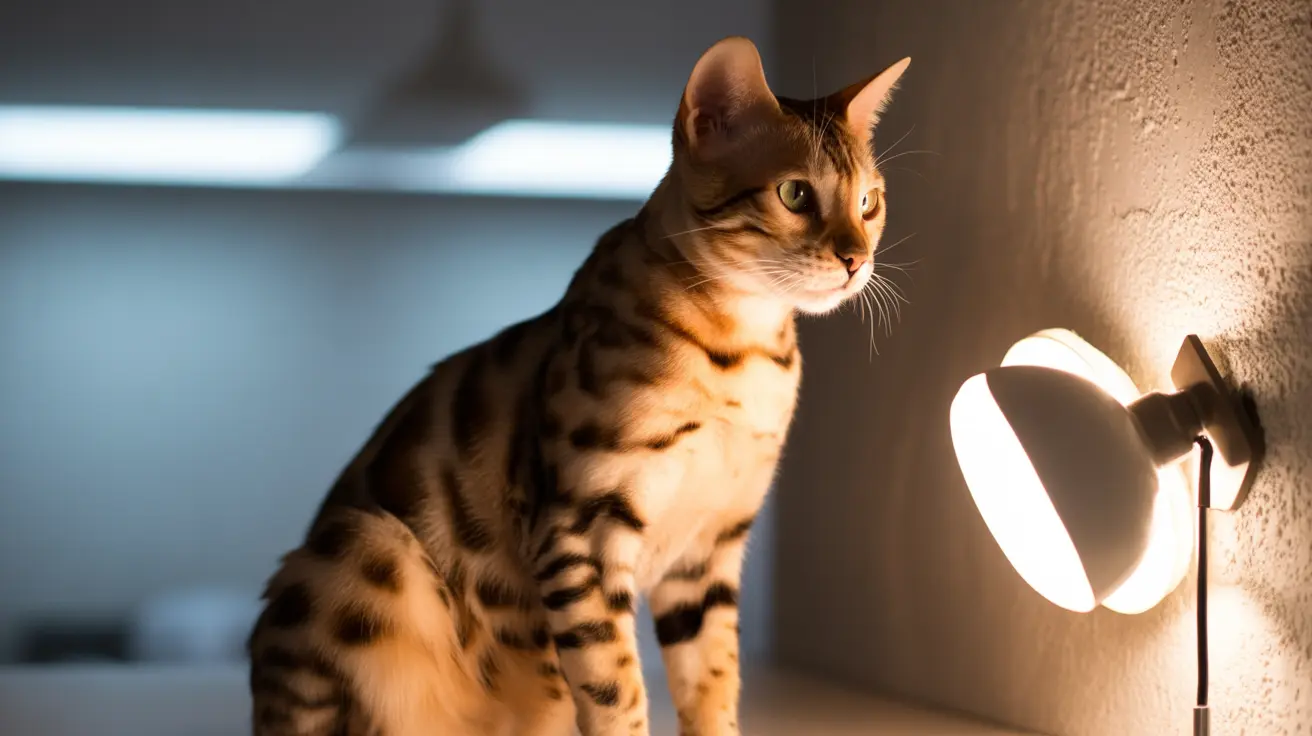For cat owners looking to provide additional warmth for their feline friends, heat lamps can seem like an attractive solution. However, these warming devices require careful consideration and proper setup to ensure your cat's safety and well-being.
In this comprehensive guide, we'll explore everything you need to know about using heat lamps for cats, including essential safety measures, proper installation techniques, and potential alternatives that might better suit your needs.
Understanding Heat Lamps and Their Impact on Cats
Heat lamps generate concentrated warmth through infrared radiation, similar to natural sunlight. While cats naturally seek out warm spots for comfort, the intense heat from these devices requires careful management to prevent accidents and injuries.
Benefits of Heat Lamps for Cats
When properly installed and monitored, heat lamps can provide several advantages:
- Supplemental warmth for outdoor cats during cold weather
- Support for elderly cats with arthritis or joint issues
- Additional heat for sick or recovering cats
- Warmth for newborn kittens who can't regulate their body temperature
Critical Safety Considerations
Fire and Burn Risks
The primary concern with heat lamps is their potential to cause serious injuries or fire hazards. Heat lamp bulbs can reach extremely high temperatures, potentially causing severe burns if cats make direct contact. Additionally, knocked-over lamps or contact with flammable materials can lead to devastating house fires.
Electrical Safety
Exposed cords present both shock and fire hazards. Cats may chew on wires or knock over poorly secured fixtures, creating dangerous situations. Always ensure all electrical components are properly secured and protected from curious paws.
Proper Installation Guidelines
To maximize safety when using a heat lamp for cats:
- Mount the lamp securely at least 18 inches away from where your cat can reach
- Use appropriate wattage based on the space size and heating needs
- Install protective guards or covers around the bulb
- Ensure proper ventilation in the heated area
- Create escape routes so cats can move away from the heat if desired
Safe Alternatives to Heat Lamps
Consider these safer options for keeping your cat warm:
- Heated pet beds with thermostatic controls
- Self-warming pads that use your cat's body heat
- Infrared heating panels mounted high on walls
- Thermal pet blankets
- Microwaveable heating pads designed for pets
Monitoring and Maintenance
Regular inspection and maintenance are crucial when using heat lamps:
- Check fixtures and cords weekly for signs of wear
- Clean dust and debris from the lamp regularly
- Monitor your cat's behavior around the heat source
- Replace bulbs before they burn out to prevent sudden failure
Frequently Asked Questions
How do I safely install a heat lamp for my cat to prevent burns and fire hazards?
Mount the lamp securely to the ceiling or wall, keeping it at least 18 inches from where your cat can reach. Use proper mounting hardware, install protective guards, and ensure all wires are concealed and protected.
What wattage heat lamp is appropriate for indoor versus outdoor cats?
For indoor cats, a 150-250 watt lamp typically suffices. Outdoor cats may need 250-400 watts depending on climate conditions. Always monitor the temperature and adjust accordingly.
Can heat lamps cause harm to cats, and what signs of overheating or burns should I watch for?
Yes, heat lamps can cause harm if not properly managed. Watch for signs of overheating such as excessive panting, lethargy, or drooling. Check for singed fur, red skin, or blisters that could indicate burns.
What alternatives to heat lamps are available for keeping my cat warm safely?
Safe alternatives include heated pet beds, self-warming pads, infrared panels, thermal blankets, and microwaveable heating pads specifically designed for pets.
Should I leave a heat lamp on all night for my cat, and what are the recommended monitoring practices?
It's generally not recommended to leave heat lamps on overnight without supervision. If overnight heating is necessary, use a thermostat-controlled heated bed instead. If you must use a lamp, install a timer and temperature controller for safety.
Conclusion
While heat lamps can provide warmth for cats, they require careful consideration and proper safety measures. Given the potential risks, many cat owners find that alternative heating solutions offer better safety and peace of mind. Whatever warming method you choose, always prioritize your cat's safety and comfort through proper installation and regular monitoring.






